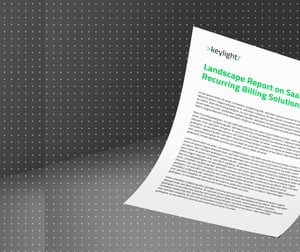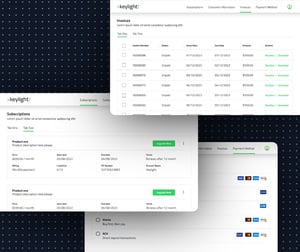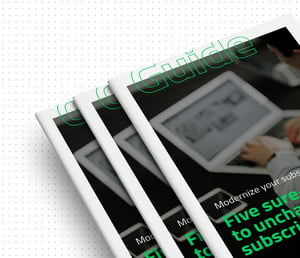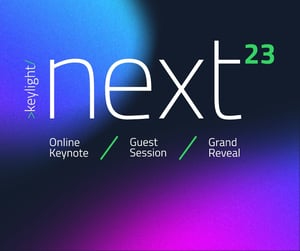Sales Operations & Technology for Subscription Businesses | Part two
![]()
n our first article on CPQ (Configure, Price, Quote) we established a number of key factors about its link with subscription businesses and why there is a need for it to evolve from the traditional approach to meet the needs of the continuous monetization model.
Those key factors include:
- The sales process does not end in subscription businesses; it's ongoing and dynamic.
- Pricing is inextricably linked to the value served by the service; it has to be in line with the value proposition to the customer.
- For the subscription business, the customer relationship, product/service and pricing are constantly evolving. The CPQ solution needs to be flexible and automate complex processes.
- Selling is not about one-off transactions but long-term profitability and sustainability (renewals, upsell and cross-sells).
- The initial closing needs to consider the long-term opportunities for upgrades, downgrades, add-ons, pricing experiments and additional product dependencies for discounts.
- Getting the user and customer experience right is essential and inextricably linked to CPQ – A solution that should allow complexity and enable smooth selling.
In this article, we look closely into the challenges presented by traditional CPQ methods and how a modern solution helps optimize the sales process.
The changing role of the sales team in subscription businesses
To understand the challenges and needs of subscription CPQ, we also need to understand the changing role of sales teams in the digital world. Rather than being a convincing voice on the end of the phone, their role now is to understand the customer and make sure they can find what they need and engage on their own time and terms. That may be on the phone, or, more likely, from a virtual or even unseen space within the customer journey. Research has shown that most B2B buyers prefer not to talk to sales representatives, but buy online.
The Harvard Business Review reported:
"In a pre-pandemic survey of 750 B2B customer stakeholders involved in complex “solutions” purchase within their organization, customers reported spending only 17% of their total buying time interacting directly with supplier sales teams. Instead, much of their purchase activity comprised independent learning online (27%), independent learning offline (18%), and building consensus across a wide range of internal and partner stakeholders (22% and 11% respectively)."
The article continued by highlighting that the all important 17% of supplier buying time spent interacting with sales teams in one way or another, is across all suppliers, not per supplier. They said:
"So, if three suppliers are competing for the same opportunity, one can assume customers divide that time roughly equally across all three, leaving any given sales team with a vanishingly small window of opportunity to interact directly with that customer — perhaps 5% or 6% of total buying time if they are lucky."
This lack of direct contact, resulting from a buyer's desire for autonomy over their purchases and the management of their time in their busy personal and professional lives, means that the experience they have with the sales team is more important than ever. It's essential to make the buying process easy and straightforward. A dedicated, modern CPQ is designed to meet those customer needs and aid the sales teams in fulfilling their role.
Value in CPQ and subscription customer relationships
The growing sophistication of subscription models has given customers more options. Customer expectations evolved. They can quickly compare pricing and experiences, then switch to a competitor if they're not satisfied. Therefore, understanding the customer and the role that CPQ plays in that relationship is essential, particularly because the window for capturing interest is small, and the sales process is ongoing - there's no space to become complacent.
In many ways, with subscription businesses, you are no longer principally selling a product or service, but rather a symbiotic relationship that's designed to fulfill a customer need. From that standpoint, areas of importance and consideration for the buyer are not just the product/service itself, but the process around it and the overall experience your business offers.
Therefore, the areas of key importance for CPQ and its impact on the wider customer experience are:
- Accurate quotes that reflects the specifics of customer request
- Fast and efficient sales processes
- A seamless experience at renewal, upgrades and downgrades
For sales teams, the challenges to meeting those needs with legacy CPQ processes are:
- Quote inconsistencies
- Configuration errors
- Miscommunications or a lack of collaboration between sales and internal teams
In terms of CPQ, subscription businesses are changing how businesses design their offerings and price. Where traditional CPQ solutions were designed for one-time sale, subscription CPQ should allow businesses to:
- Experiment with pricing models, a better understanding of the product-pricing fit and it gives buyers a sense of autonomy as they select rates they're comfortable with.
- Have control over the growing and complex product catalog, which reduces the time to quote and makes quotes more accurate, thereby further supporting relationships with the customer.
- Stay flexible when the customer journey involves customer self-service or partner quoting processes, so that the sales process can evolve with customer expectations.
How subscription CPQ accelerates sales
With all of that in mind, a modern CPQ system should accelerate the subscription sales process and address key pain points for sales teams and partners:
Delivering consistent and accurate pricing
Modern CPQ solutions allow businesses to enable sales teams in a timely manner. It does this by ensuring new revenue or pricing strategies can be implemented easily and offer layered complexity to sales reps or partners to configure accurate quotes.
Reduce the time spent selling
Automation is an essential part of a subscription business that intends to grow, and modern CPQ employs automation by configuring quotes and building contracts quickly based on pre-approved templates. The net result is that it gives sales teams the tools they need to quote and price quickly without a loss of detail, accuracy or service levels before reinvesting their time in a higher volume of leads. In short, selling is faster and more successful because it meets customer needs.
Making the sales team subscription-ready
Crucially, a modern CPQ system is built to be fit for purpose, designed for the rigors and unknown evolution of your business and the wider subscription landscape. That means having centralized administration of automated workflows and pricing rollout to speed up the onboarding of sales channels; having systems that are built to handle the complexities of the product/service and the size of the database; and providing accurate customer events to the sales team based on customer interactions.
Attributes of a modern CPQ architecture
A modern CPQ and billing system needs to view sales as part of ongoing relationships with customers. The recurring revenue model must seek to capitalize on this new type of customer relationship by offering multiple ways to price and package products and services at the outset, as well as making it easy to adapt the relationship going forwards (both collectively and individually with upgrades, downgrades, additional users etc). The system must be flexible enough to adapt to change within the business and the commercial landscape around it.
The subscription business model becomes more complex as businesses grow, adding new customers, products, services and partners. As that happens, it becomes more and more important for systems to have a unified data model, rather than using separate tools for tasks like billing calculations and invoicing. The modern CPQ system should have everything in one place, and well-integrated to the continuous customer journey.
The success of subscription businesses is directly linked to customer satisfaction. Part of that means simplifying the process from the point of quoting to payment so they don't fall away in the meantime. Inevitably, that means an extremely complex internal system. However, in terms of CPQ and its role within the subscription platform, the essential factor is that the complexity is not experienced by the customer. That means providing all the complex elements that sales teams need, but making them easy to access, all in one place. Meanwhile, you need to hide that complexity from the customer and give them an easy and straightforward experience. The intricacies of a modern CPQ must, in effect, be invisible to clear out typical roadblocks of sales teams, transforming your quote-to-cash cycle into an automated flow.
keylight solution:
Native self-service capabilities
The keylight CPQ provides seamless connectivity to the central subscription engine. It provides native self-service capabilities straight out-of-the-box. Guided selling allows customers and teams to navigate complex product configurations and make changes easily.

Replace traditional engines with
a user-centric subscription system
Start now with >keylight/






